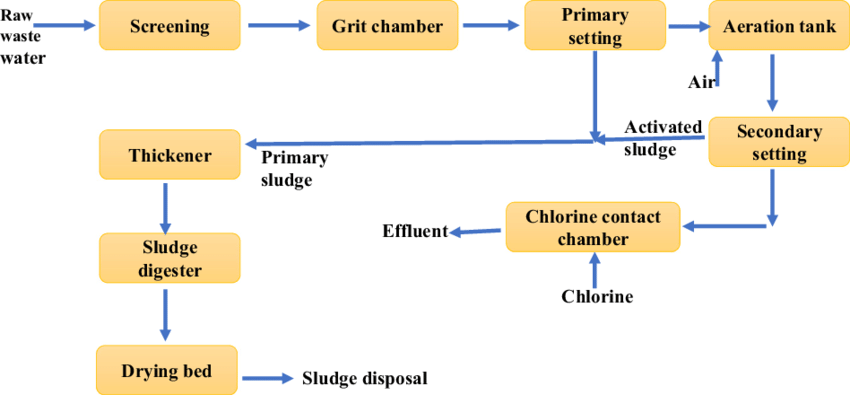About Reclaim Waste
About Reclaim Waste
Blog Article
Reclaim Waste Things To Know Before You Buy
Table of ContentsReclaim Waste Can Be Fun For AnyoneAbout Reclaim WasteReclaim Waste Can Be Fun For AnyoneThe Of Reclaim WasteNot known Details About Reclaim Waste
Explore the kinds, occurrences, and forms of fluid waste. Domestic sewer waste refers to the waste and products from a domestic septic tank. This kind of waste is produced by people in houses, colleges, and other structures. This only includes septic containers that have a drain area. The correct administration and disposal of domestic sewer waste require fluid waste to be transferred to a sewage therapy plant where the proper methods and equipment are put on cleanse and get rid of waste.
Industrial waste usually includes prospective dangers, such as flammable materials or a combination of fluid and solid waste products, and requires an advanced and thorough disposal process. The disposal of commercial waste typically involves the filtering of waste before transportation to guarantee safe and appropriate disposal. Hazardous waste is developed from by-products and runoff of industrial processes and production.
This kind of waste can not use the same sewage management transport or processes as septic or business fluids. The commercial waste management procedure needs the examination and testing of fluid waste prior to it undertakes the disposal procedure (liquid waste disposal). Runoff waste is the fluid waste that comes from overflow and excess stormwater in very booming locations or cities
Runoff waste can trigger contamination and flooding if not handled correctly. Ensuring appropriate waste monitoring can protect against calamities and decrease ecological harm.
All About Reclaim Waste
Contact PROS Services today to find out concerning our waste monitoring and disposal solutions and the proper ways to look after the liquid waste you generate.
(https://gravatar.com/maximum5d830db060)This so-called 'wastewater' is not only a crucial resource however, after treatment, will certainly be launched to our land, rivers or the ocean. Made use of water from commodes, showers, bathrooms, kitchen sinks, laundries and commercial processes is understood as wastewater.

water made use of to cool down equipment or clean plant and equipment). Stormwater, a kind of wastewater, is overflow that moves from farming and city areas such as roofings, parks, yards, roads, courses and gutters right into stormwater drains pipes, after rainfall. Stormwater moves unattended straight to regional creeks or rivers, at some point reaching the ocean.
Not known Details About Reclaim Waste
In Queensland, most wastewater is treated at sewage treatment plants. Wastewater is transported from domestic or commercial websites through a system of drains and pump terminals, recognized as sewage reticulation, to a sewage therapy plant. City governments develop, keep and run most sewage treatment plants. Operators are licensed under the check my source Environmental Protection Act 1994 to release cured wastewater at an acceptable environmental standard into waterways.
The Department of Natural Resources encourages city governments regarding handling, operating and maintaining sewerage systems and treatment plants. In unsewered areas, city governments might call for homeowners to install private or family sewer therapy systems to treat residential wastewater from bathrooms, kitchens, washrooms and washings. The Department of Natural Resources authorizes the usage of house systems when they are verified to be reliable.
Many stormwater obtains no treatment. In some new communities, therapy of some stormwater to get rid of litter, sand and crushed rock has actually begun making use of gross contaminant traps. Wastewater treatment takes place in 4 phases: Removes strong issue. Bigger solids, such as plastics and various other items mistakenly released to sewers, are removed when wastewater is gone through screens.
Utilizes tiny living microorganisms recognizes as micro-organisms to break down and eliminate remaining liquified wastes and great fragments. Micro-organisms and wastes are included in the sludge.
The Reclaim Waste PDFs
Nutrient elimination is not readily available at all sewage treatment plants due to the fact that it calls for costly specialised devices. Clear fluid effluent generated after treatment may still include disease-causing micro-organisms - liquid waste removal.

This normally indicates wastewater has to be treated or pollutants eliminated prior to it can be released to waterways. The majority of wastewater moves into the sewage system. Under the Act, city governments provide authorizations and permits for environmentally relevant activities (Periods) entailing wastewater releases that may have a neighborhood influence. The department administers authorizations and licences to ERAs entailing wastewater launches that could have a regional or statewide impact.
All About Reclaim Waste
Otherwise, examples are taken for research laboratory evaluation. Often lots of examinations are required to establish the levels of each of the various pollutants such as oils, heavy steels and pesticides in water. Tracking provides factual information about water top quality and can confirm that licence problems are being satisfied. The information acquired through surveillance provides the basis for making water high quality choices.
Report this page